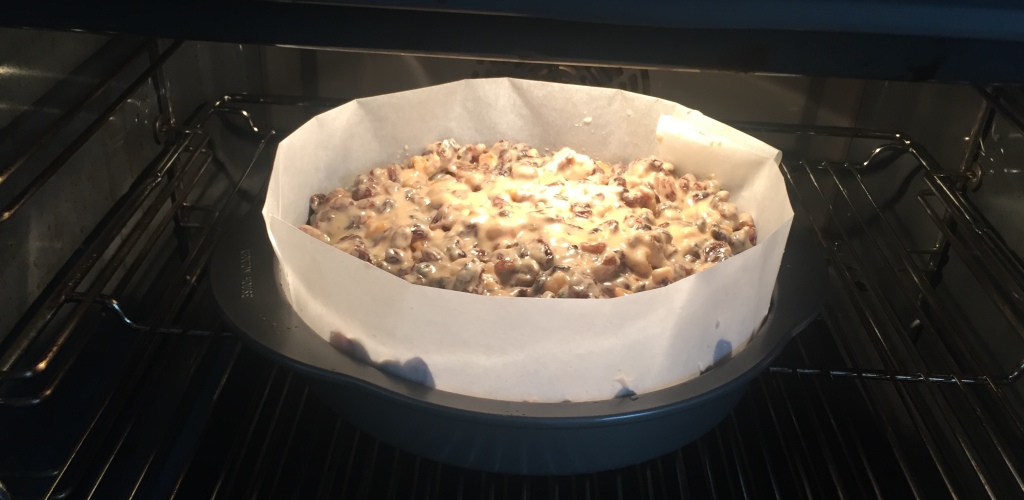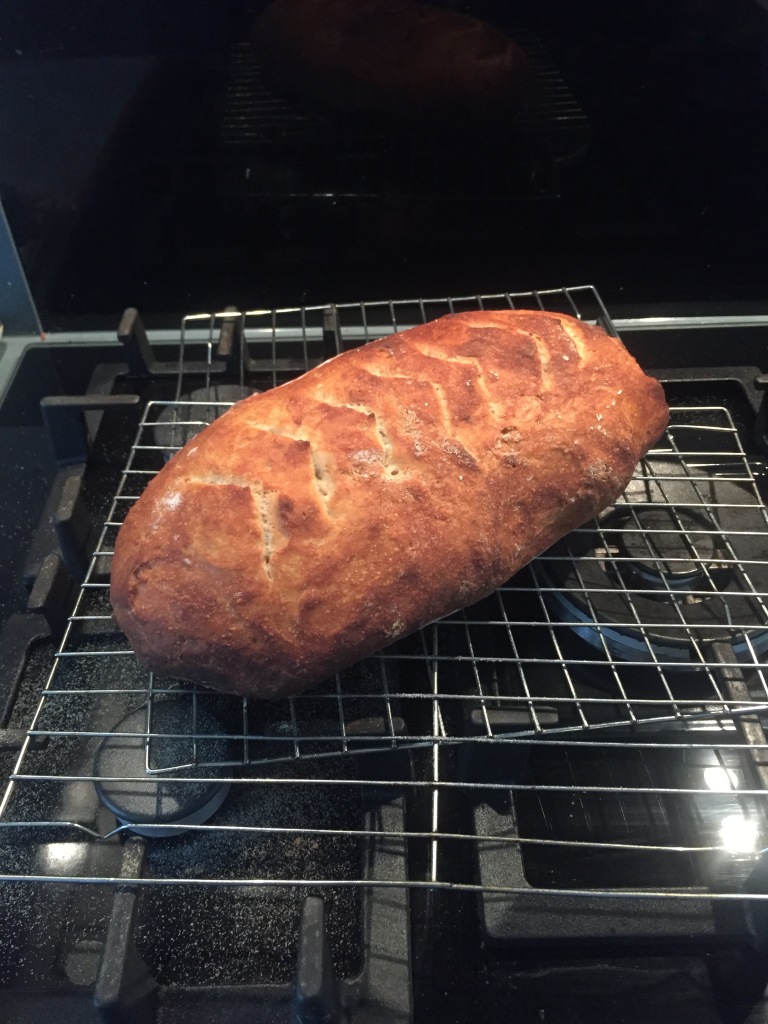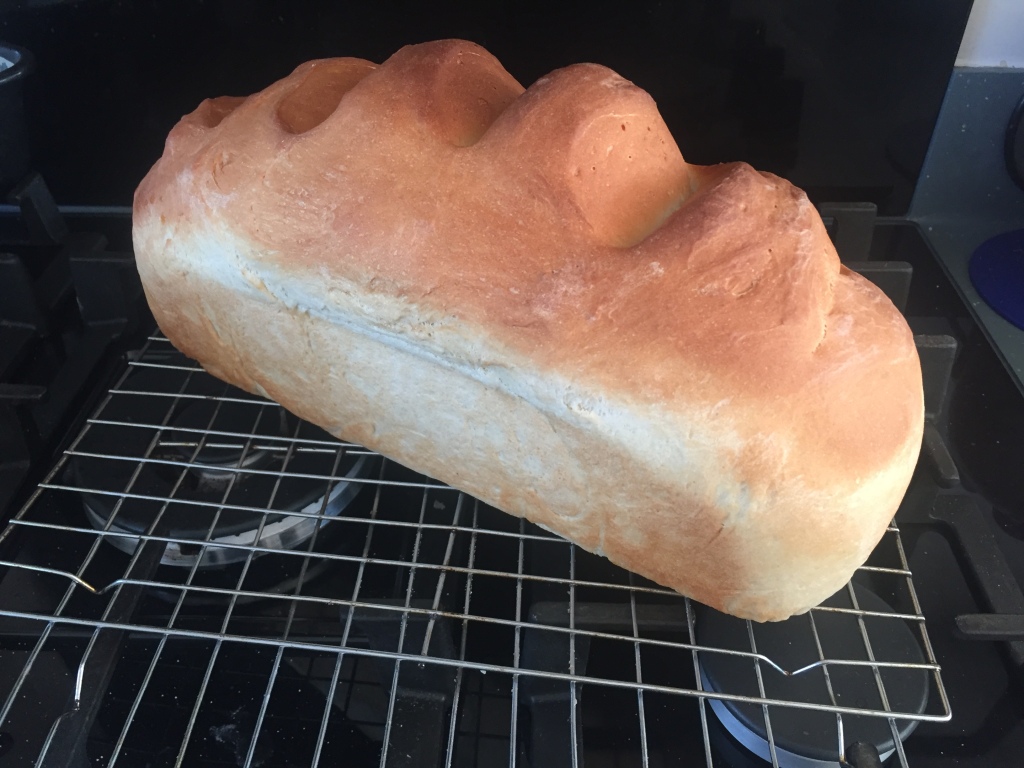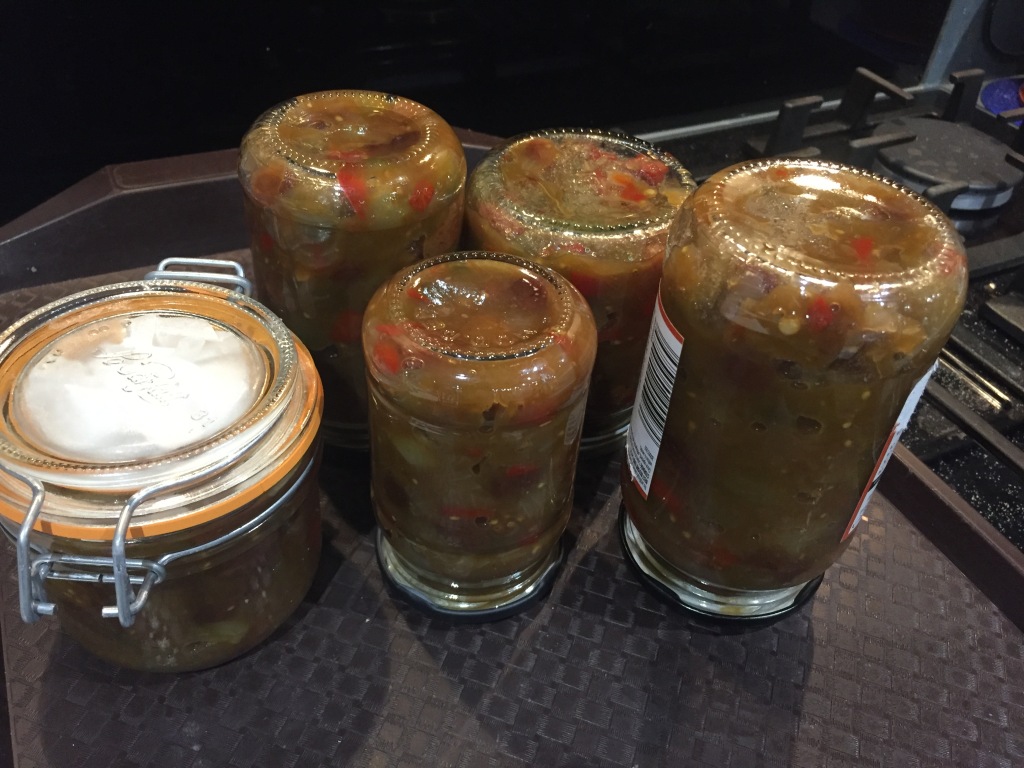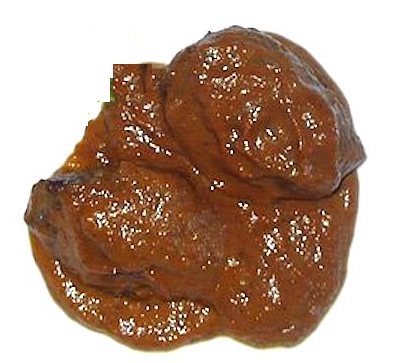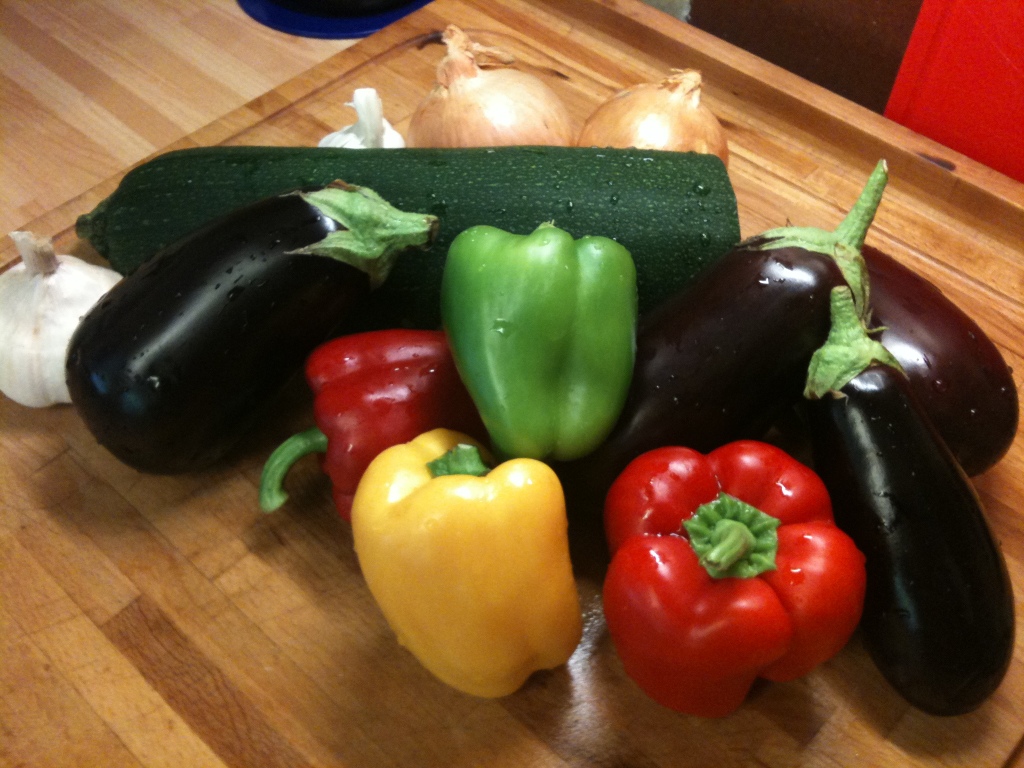Well, it’s been a while since I came here and published something here. This is something I developed, cooked and tested in Spain.
Ingredients
- 500 grams Fairly fatty (16%) minced pork (the cheaper burger mince in Mercadona)
[or mince your own shoulder or belly of pork] €2.10 (about £1.90)
- 260 grams Fairly fatty bacon (I used Mercadona pancetta pieces)
[or use streaky bacon] €1.94 (about £1.75)
- 240 grams Lean pork (again Mercadona do a Magro de cocido – lean pork shoulder)
[or use loin of pork] €1.20 (about £1.10)
It didn’t seem like 1 kilo of meat when I was buying it, but there you go. I’ve used 25% bacon, but it could be up to 50% bacon or gammon/ham (not Spanish ‘York’ ham or the iberico/serrano types). Ideally all would be minced together and about half put back through the mincer before combining with other ingredients.
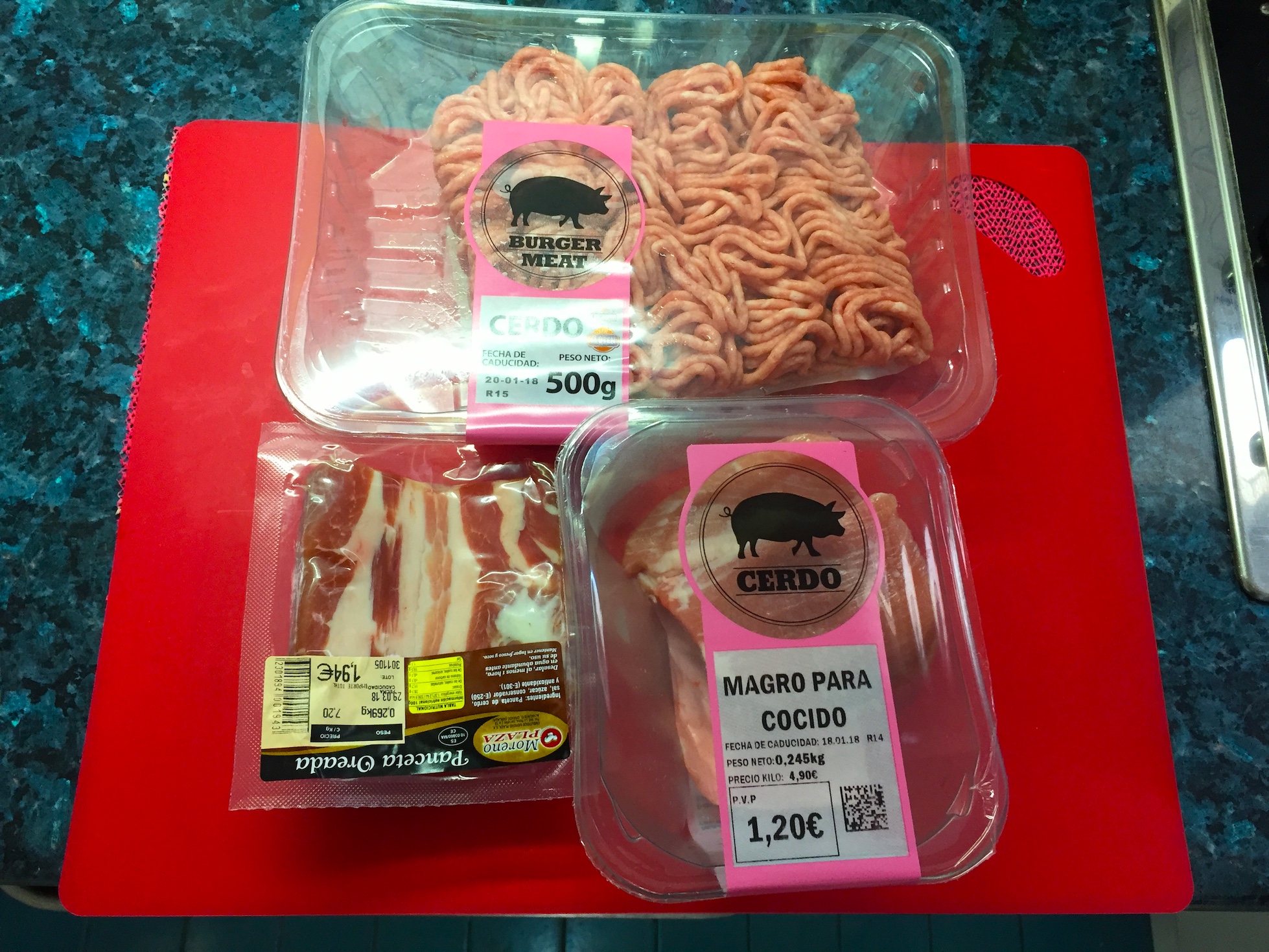
As I have no mincer here in Spain, I hand-chopped the bacon and the lean pork. Very small pieces, which took about 50 mins.
- 1 tablespoon Brandy (possibly try 2 tablespoons next time).
- 3 tablespoons Orange juice (freshly squeezed) – perhaps juice of a full orange next time.
- 1¼ t/spoon each paprika, ground cumin, sage, thyme.
- ½ t/spoon each ground black pepper, salt.
- ¼ t/spoon ground clove. Maybe a little less next time – certainly no more.
Garnish
I peeled and cut up a ripe pear (only because I had one ready for use) and used the strips of pear alongside gherkins to decorate. It might be nice to use a second pear next time.
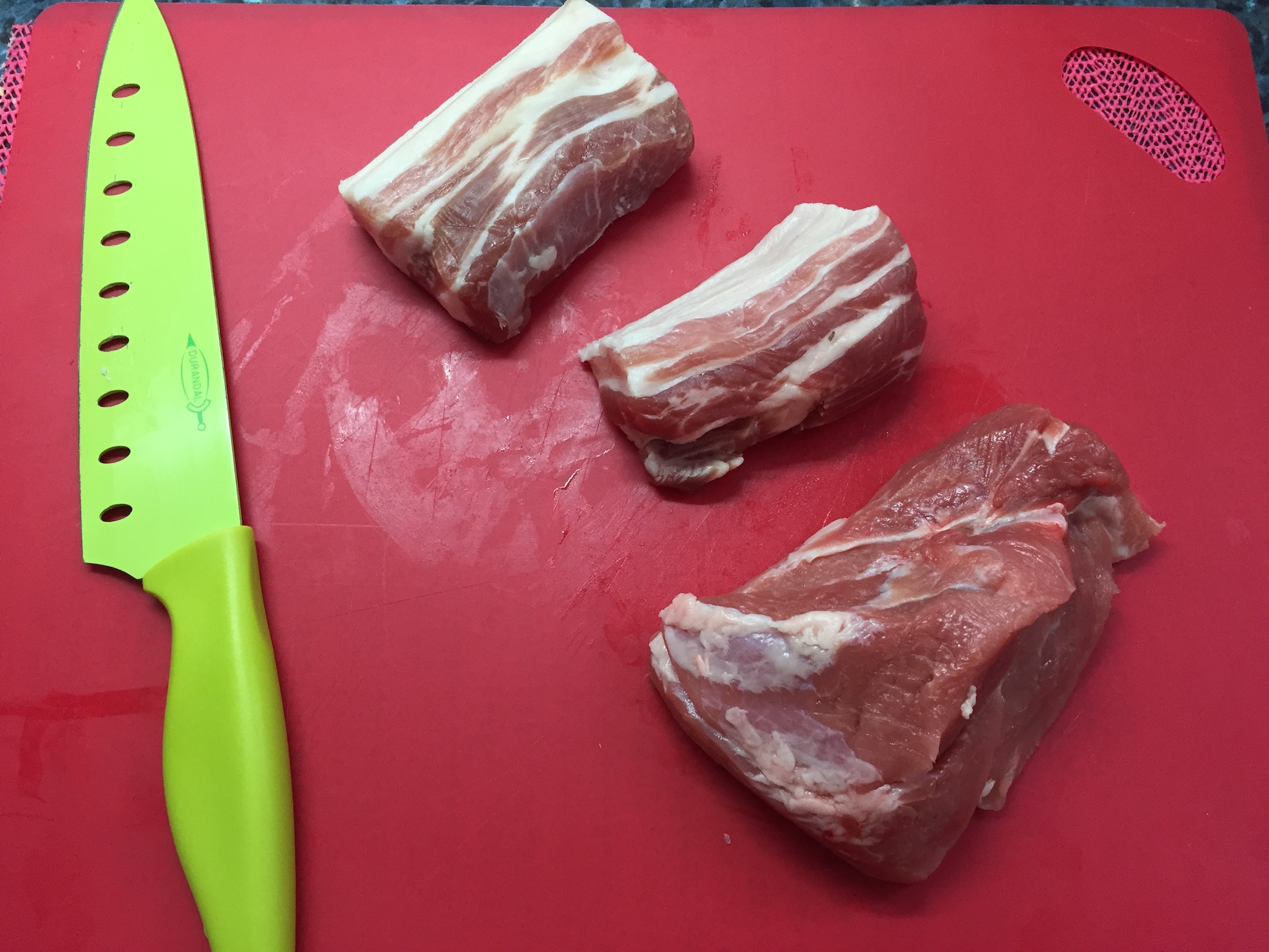
Method
As I say, all of the meat should be minced and thoroughly mixed together before re-mincing about half of the mix. This will give a varied texture to the finished product.
Now mix all of the ingredients together and if you have time, leave them to marinade for an hour or so, overnight would be good.
Prepare your terrine. Most recipes ask you to line this with streaky bacon, but that’s your choice – it does add to the cost (so far this has cost less than €5.25- about £4.75).
Instead, I lined the dish with folded baking parchment AND cling film. The paper helps to protect the meat during cooking and the cling film holds it all together when cooked – there should be enough cling film to cover the meat entirely.
Now pack the mix into the terrine. I put half the mix in the bottom, pushing right into the corners – fiddly because of the paper; then I added the layers of pear and gherkin, before adding the rest of the meat mix. Push down firmly.
Preheat the oven to 1600C. It could be a little lower if using a fan oven.
Cover with the terrine lid (or a double layer of aluminium foil if you have no lid) and place the terrine into a small roasting tray. Add enough just-boiled water to the roasting tin to come 2/3rd of the way up the outside of the terrine. Cook in the centre of the oven for 1½ hours.
When it’s ready (test with a skewer – if it comes out hot after a few seconds, it’s ready) remove from the roasting tray. Remove the lid and cover with a triple folded layer of tinfoil. Add weights to the top (I used some tins of tomato) and allow to cool.
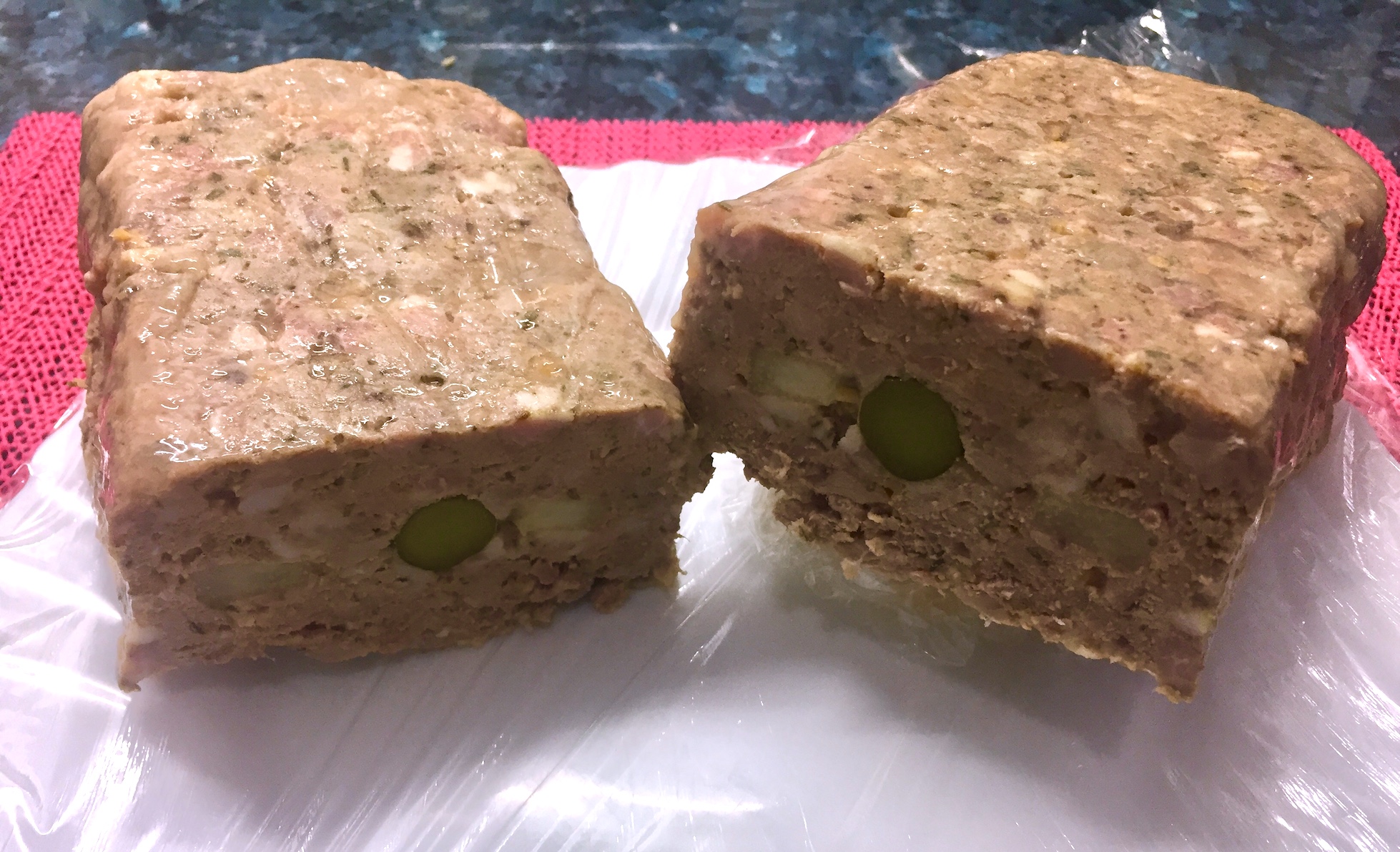
Refrigerate overnight.
Cut and serve with a pickle of your choice.
